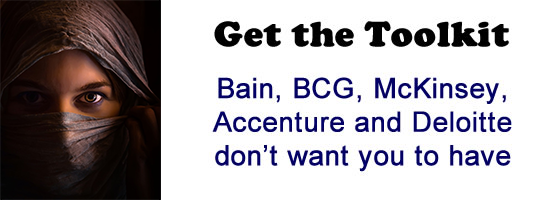How NASA Used an Unforgettable Image to Brilliantly Communicate a Big Message
In Arthur C. Clarke’s classic Space Odyssey Sci-fi series a recurring theme is the presence of a large back monolith built by an ancient civilization. The monolith has transformational powers that alter the trajectory of humanity, starting with our ancient cave-dwelling ancestors and then following our evolution through the modern day and into the future. While the questions of who built the monolith or why it was built are never clear, it has the power to bring about radical change which alters the trajectory of humanity
That may be in part why the recent discovery of a perfectly rectangular iceberg, on one of NASA’s Operation IceBridge routine Antarctic polar surveillance flights, is capturing our imagination.
The iceberg is several miles long and about 130 feet in height. It’s so perfectly formed that pictures of it seem to be created in Photoshop. The 90 degree edges and immense proportions would make it wonderful fodder for those who want to believe that the hand of some alien civilization carved it out–perhaps to ship back for a very large party of little green aliens sipping on little green drinks. The truth however, is not so fanciful.
According to NASA scientists Jeremy Harbeck, “I thought it was pretty interesting; I often see icebergs with relatively straight edges, but I’ve not really seen one before with two corners at such right angles like this one had.”

Credits: NASA/Jeremy Harbeck
Rectangular icebergs are not at all rare, and the two spotted by NASA recently aren’t even the largest. A 42,000 square mile geometric iceberg, named B 15, was spotted in 2000.
Relatively close to the newly discovered iceberg another large rectangular iceberg, A 68, which was discovered in July of the year, is about the size of Delaware.
These rectangular, and other straight edged geometric, icebergs form when they cleave off of an ice shelf and are spotted before they erode and break up further by weather and water.
They are powerful, awe-inspiring, images–vivid reminders of the scale on which nature operates and the tremendous beauty and fragility of our planet.
Billboards for the Future
But there’s something else about this image that strikes me and which has been part of the way NASA has captured our imagination time and again, since the dawn of space race. It’s a lesson any entrepreneur would be wise to pay attention to.
Remember the iconic picture of the blue marble, the Earth floating like a gem against infinite darkness? Or what about pictures of space walks, the horse head nebula and the image of thousands of galaxies littering the universe captured by the Hubble telescope. All of these convey a power and a magnificence that requires no words. They are billboards that shape they way we think.
NASA has become a master at shaping public sentiment through the shock and awe of its images. Think about it. Other than Armstrong’s “One small step…” quote, do you remember anything else said or written about the space race? Yet, dozens of images instantly flood your mind.
Humans are a visual species. We communicate much more through images than words and we remember images with greater ease. It’s how we’re wired. Well before Gutenberg’s printed books we were using images to capture stories; from cave walls to the Parthenon, it’s how we share the most powerful concepts and ideas.
But most of us lose sight of that when we try to communicate complex ideas. Instead of simplifying them we complicate them even more under a mountain of text. Just think of all the PowerPoint presentations and written reports you’ve seen whose meaning gets lost in the words.
That’s not to say that words are unimportant. I’m a writer, I’m in love with words. But nothing sticks like an image. And the more complex the idea, the more useful an image can be in simplifying it and making it impactful. That image of the blue marble is etched on our collective psyche and may well have single-handedly sparked the start of the eco and green movements.
The lesson here is utterly simple; images are among the most powerful tools with which we tell stories that endure in their influence. It may sound contrived to try and link NASA’s magnificent images to what you’re doing to reach your market, but the same basic principle applies; complicated ideas require simple images in order to be understood by most people. Using powerful and memorable images that shock and awe will help you rise above the noise and be remembered long after the words are forgotten.
Fact Imitating Fiction
Oh, and for those of you that really want to believe in extraterrestrial influence, or if you’re like me and just get a kick out of how fact often imitates fiction, here’s something to think about.
All of the monoliths in Clarke’s Space Odyssey series had the same ratio of depth, width, and length; 1:4:9. While there are no definitive dimensions given for the newly discovered iceberg, NASA did say that it’s about 130 feet in height above the waterline and several miles long.
Looking at NASA’s pictures can be deceiving, especially when taken at high altitudes and odd angles. However, if we assume 80%-90% of the iceberg is under the waterline and then do a quick and very primitive measurement of the photos, we get an interesting, and pure guesstimate, of a ratio of about 1:4:9.6.
Of course, that is purely coincidental, right?
This article was originally published on Inc.
Image credit: Pixabay
Wait! Before you go…
Choose how you want the latest innovation content delivered to you:
- Daily — RSS Feed — Email — Twitter — Facebook — Linkedin Today
- Weekly — Email Newsletter — Free Magazine — Linkedin Group
 Tom Koulopoulos is the author of 10 books and founder of the Delphi Group, a 25-year-old Boston-based think tank and a past Inc. 500 company that focuses on innovation and the future of business. He tweets from @tkspeaks.
Tom Koulopoulos is the author of 10 books and founder of the Delphi Group, a 25-year-old Boston-based think tank and a past Inc. 500 company that focuses on innovation and the future of business. He tweets from @tkspeaks.
NEVER MISS ANOTHER NEWSLETTER!
LATEST BLOGS
Three things you didn’t know about credit cards
Photo by Ales Nesetril on Unsplash Many of us use credit cards regularly. From using them for everyday purchases to…
Read MoreFive CV skills of a business-minded individual
Photo by Scott Graham on Unsplash The skills listed on a CV help employers quickly understand your suitability for a…
Read More


